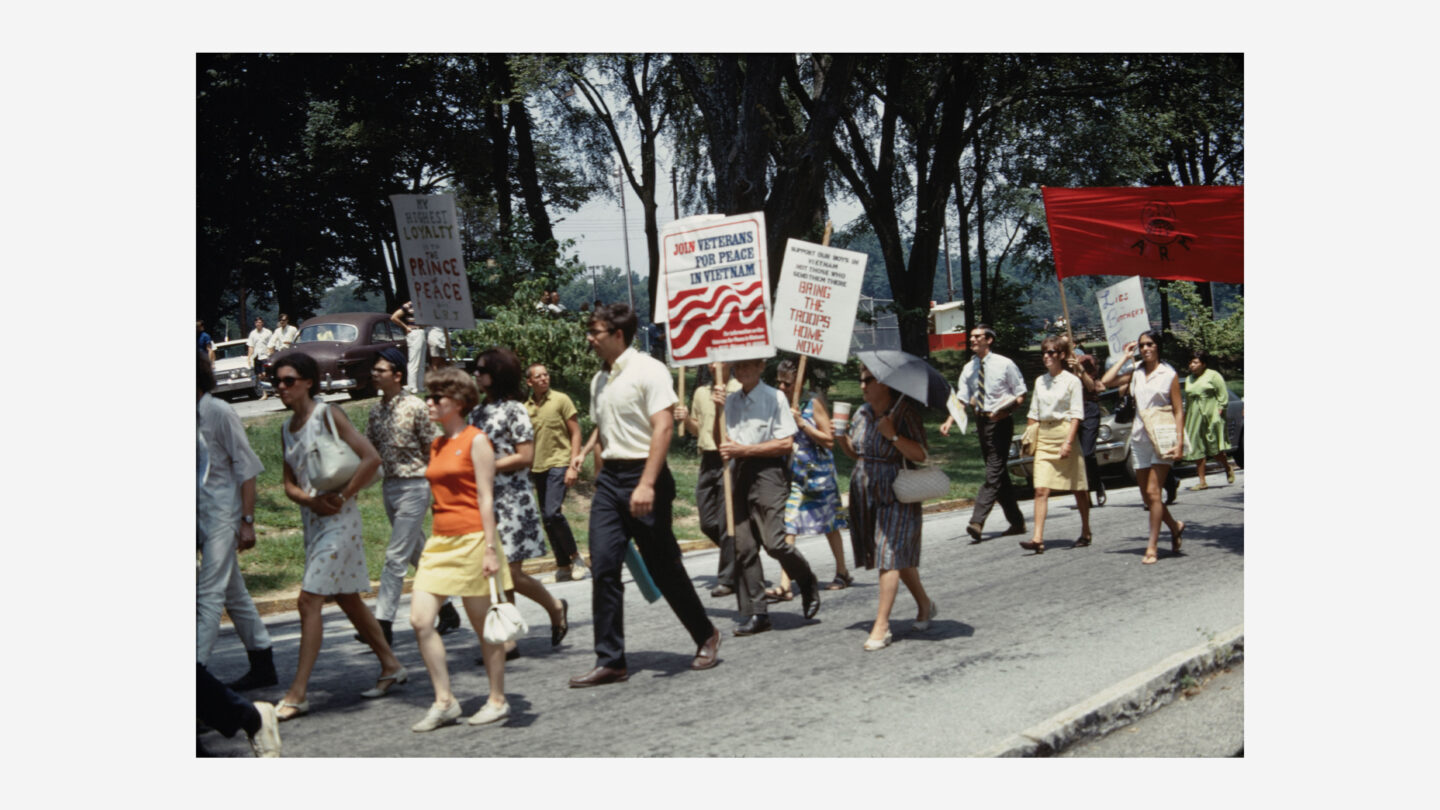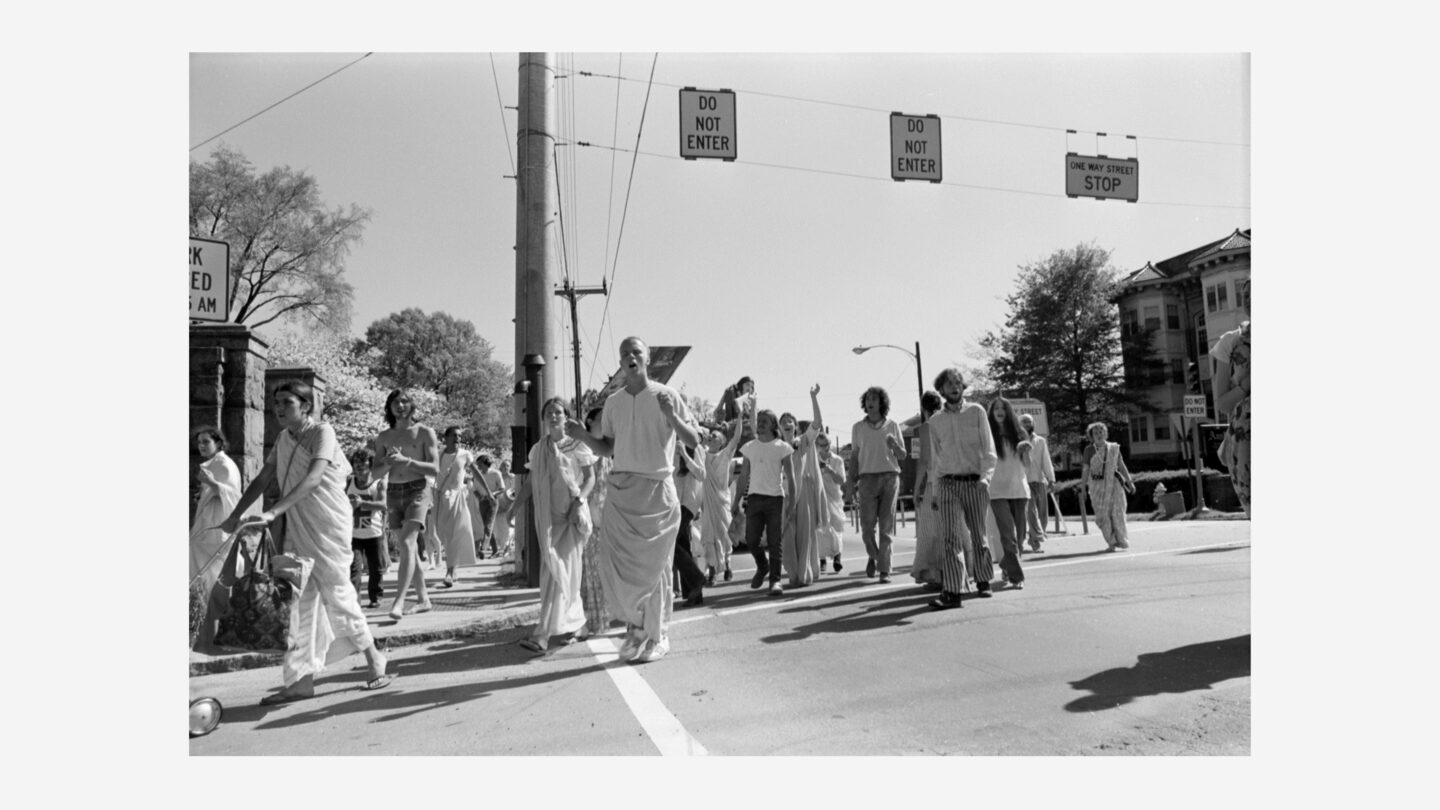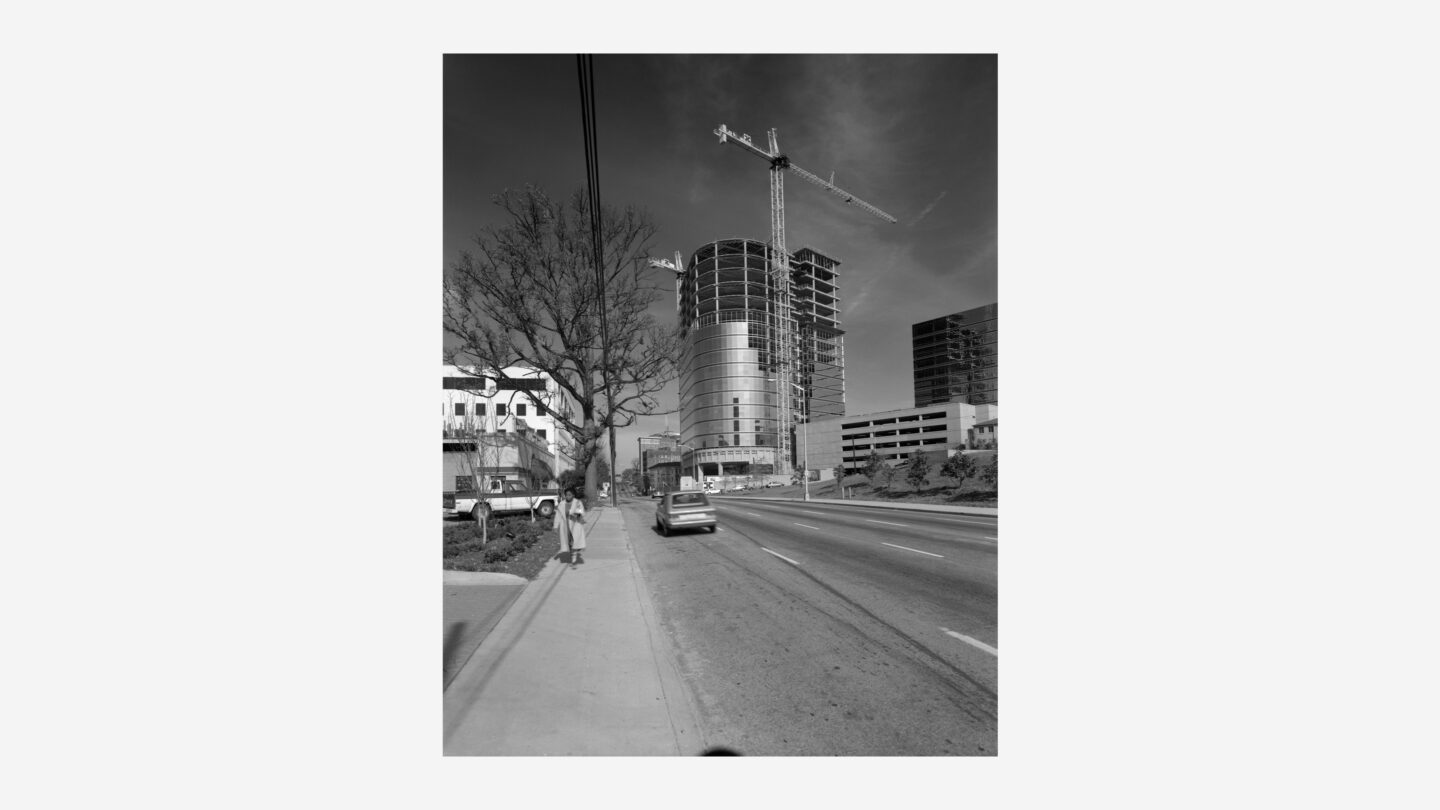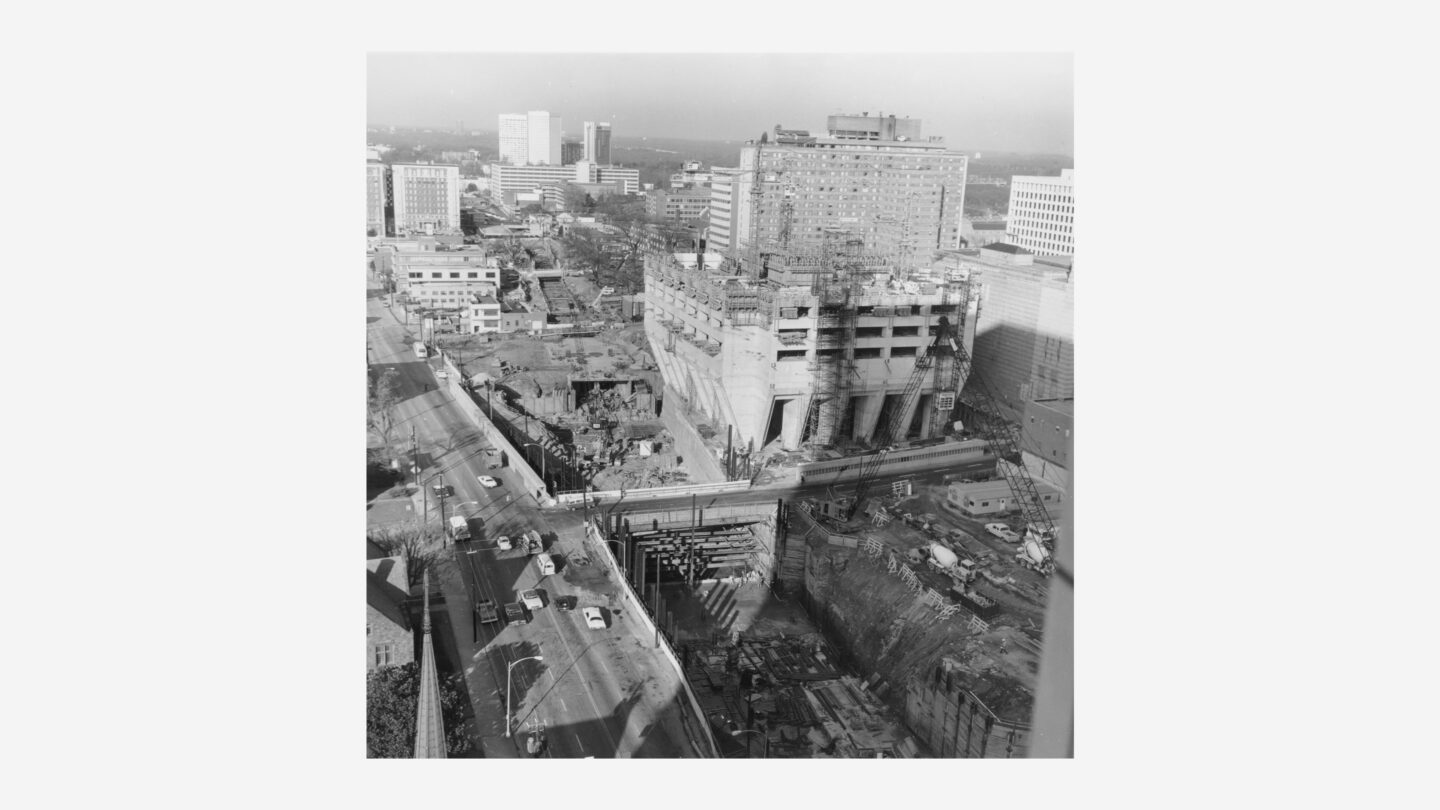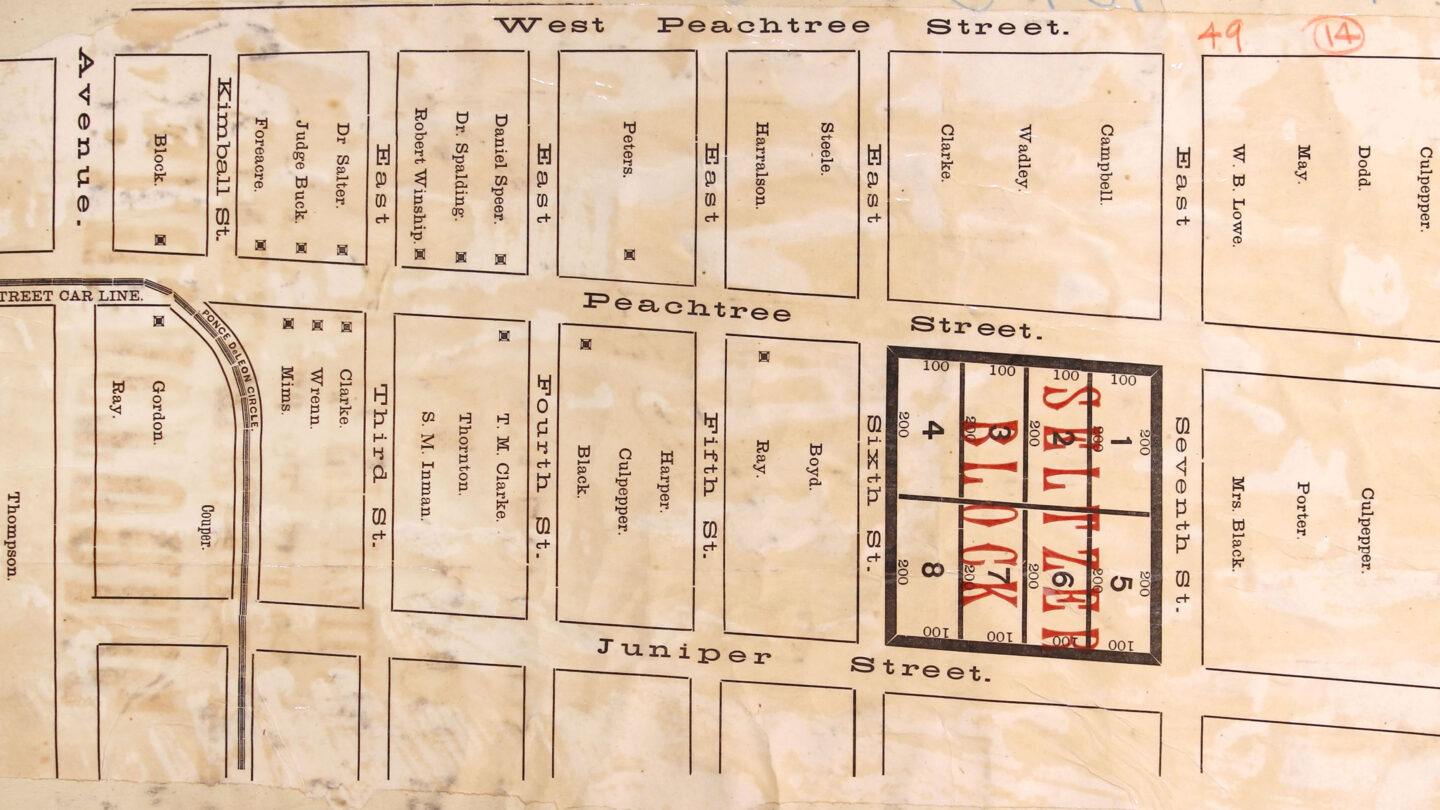
A map advertising land for sale on the original Peters plot, Atlanta, Georgia, Circa 1885, Adair Realty and Loan Company plat maps, Kenan Research Center
It’s 2024! Atlanta History Center is bringing back Party with the Past, an event series focused on visiting historic sites around the city to highlight their stories.
Each year, we will aim to get to know a neighborhood young ATLiens have made home. We’re starting with Midtown, an area with a complicated history. It has been home to everyone from Atlanta’s elite to its counterculture, and its population and geography have changed significantly over the last 150 years. Both a neighborhood and a broader residential district, Midtown is generally considered to encompass Ansley Park, Atlantic Station, Sherwood Forrest, Home Park, and of course, the neighborhood known as Midtown itself.
A Sanborn map depicting the area around the Margaret Mitchell House, the location of our upcoming Party with the Past, circa 1932. Gift of Yesteryear Book Shop, 1992.
The Origins of Midtown
In its early days, the land now known as Midtown wasn’t part of the original boundaries of Atlanta. North Avenue formed Atlanta’s upper boundary, and anything past it remained mostly unsettled from when lands forcibly ceded by native tribes were auctioned off by land lottery in 1821 until Reconstruction more than 60 years later. Some of the area was used for industry, like the 400-acre parcel of land purchased for around $5.00 an acre in 1856 by Richard Peters, a businessman and early prominent Atlantan. About ten years later, during Reconstruction, part of Midtown was inhabited but wasn’t necessarily the most pleasant place to live. In fact, it was a shantytown, known as Tight Squeeze. Tight Squeeze, which referred to the two or so blocks around 10th Street, referenced either the ravine that made the original Peachtree Street narrower as it curved around it, or the fact that the area was considered a “mighty tight squeeze to get through.” Early twentieth century historians like Eugene Mitchell attributed this part of the area’s nickname to the perception of Tight Squeeze as an area where you might be robbed (or even killed!) if you passed through at the wrong time of day.
Tight Squeeze didn’t remain Tight Squeeze for long. Shortly after Reconstruction ended, Peters began selling off parcels of the land for residential development. Peters is responsible for many of the iconic street names of Midtown. He numbered streets that ran horizontally through the city and named streets that ran parallel to Peachtree Street after other trees, such as Cypress, Juniper, and Myrtle. Peters is also responsible for donating about half of the land that makes up Georgia Tech today after his attempts to develop it into a planned suburb failed in 1884.
The alcove where Margaret Mitchell had written most of the manuscript for Gone with the Wind in apartment number one of the Crescent Apartments at 979 Crescent Avenue in the Midtown area of Atlanta, Georgia. Photographer Boyd Lewis resided in the same apartment in the renamed Windsor House Apartments (now Margaret Mitchell House) in the late 1970s. Boyd Lewis Photographs, Kenan Research Center at Atlanta History Center
Turn of the Century
This planned suburb was an answer to a desire for more residences in Midtown that sprang up at the turn of the twentieth century, when the neighborhood became home to many notable Atlanta residents such as Jasper Newtown Smith who tried (and failed) to change Tight Squeeze’s name to Blooming Hill, Hattie High, whose mansion later became the original location for the High Museum of Art, and Gone With the Wind author Margaret Mitchell, who rented a basement apartment, nicknamed the Dump, in Midtown in the 1920s. The 1900s were also an era of commercial and cultural growth for Midtown. Industrial sites like Atlantic Steel Mill (located on present day Atlantic Station) opened in 1915, while cultural institutions like the Varsity and the Fox Theatre both opened there in 1928.
Although it declined from the 1920s through the 1940s, Midtown developed throughout the twentieth century. In the 1950s and 60s, community developers suggested calling it “Uptown” to better contrast it with Downtown, despite the fact it no longer was “uptown”—Buckhead had recently been annexed to its north. In the 1970s, Colony Square, a mixed-use shopping, residential, and business complex which was revolutionary at the time, was built.
The Counterculture Era
The 1970s were a particularly interesting time for this particularly interesting neighborhood. During this period, much of old Tight Squeeze, then known as the Strip and running between 8th and 14th streets along Peachtree Street, became the center for the counterculture movement in Atlanta and the South. This development was in keeping with much that was happening in Atlanta and the nation in the 1960s and 1970s. This was also the era of other youth-driven activist groups, like the Atlanta Student Movement, that were springing up throughout the city. In addition to counterculture broadly, the Gay Liberation Movement also called Midtown home. Midtown also hosted cultural activities like the massive music festival at which the Allman Brothers debuted.
Midtown’s moment as a counterculture hub wasn’t all fun and games. Major parts of the city were opposed to the ethos of the neighborhood and its residents, leading to the Great Hippie Hunt of October 10, 1969. The hippie hunt was a major police crackdown on the “hippies” and LGBTQ people who hung out in the Midtown and Piedmont Park area. In addition to this harassment, the Leather Aardvark, an iconic counterculture shop on the Strip, was firebombed. This wasn’t counterculture era Midtown’s only firebombing, either. The Great Speckled Bird, a counterculture newspaper that started out as part of the anti-Vietnam War movement and later began advocating for other New Left causes, was both published and popular in Midtown. It too was the victim of police harassment and an eventual firebombing in 1972.
Even though counter culturists and LGBTQ people faced significant pushback during the counterculture era, it was also the time that, according to the LGBTQ+ Historic Context Statement produced in part by the City of Atlanta, Midtown emerged as the “heart of LGBTQ+ life in the city […] with Peachtree Street and Piedmont Park becoming the early commercial and cultural landmarks for Atlanta’s LGBTQ+ community and cherished spaces for celebration and protest during the annual Pride Parades.” The Atlanta Gay Center opened in Midtown in 1976, and icons of its gay bar scene, including such venues as the Cove and Bulldogs, remain active to this day.
Modernizing Midtown
Throughout the 1980s and 1990s, new developments in transportation and commercial development helped make Midtown what it is today.
MARTA bus and train stops opened at North Avenue, Midtown, and Arts Center between 1981 and 1982, helping to increase access to the neighborhood, and the 1987 opening of 999 Peachtree, One Atlantic Center, and Campanile helped to usher in a new era of commercial development. The iconic Music Midtown festival put on its first show in 1994, and, thanks to the work of the Piedmont Park Conservancy, Piedmont Park was revitalized into what it is today starting in 1989. Midtown also started to keep an eye on its history; the 1990s also saw the birth of the movement to preserve Margaret Mitchell’s apartment, now Margaret Mitchell House, to provide space to discuss the author and her impact on Atlanta.
Today, Midtown is a vibrant, established, neighborhood that continues to develop. Construction is everywhere as it continues to grow and develop, adding new homes and businesses to those already present. The neighborhood was home to about 17,124 people in 2019, up from just 9,453 in 2000. Midtown’s population is mostly Gen Z, Gen X, and Millennials. Millennials are particularly prominent, making up 42% of the neighborhood’s population.
Atlanta History Center will host its Midtown Party with the Past in the building formerly known as Crescent Apartments. The humble apartments housed a range of Atlantans, and apartment number 1 in particular housed Gone With the Wind author Margaret Mitchell. Its last tenant was journalist and photographer Boyd Lewis. From its origins as a single-family mansion to its role as an apartment building from the 1920s through the counterculture movement, Margaret Mitchell House has witnessed much of Midtown’s transformations over the years. Join us to learn more about the history of this vibrant neighborhood.


